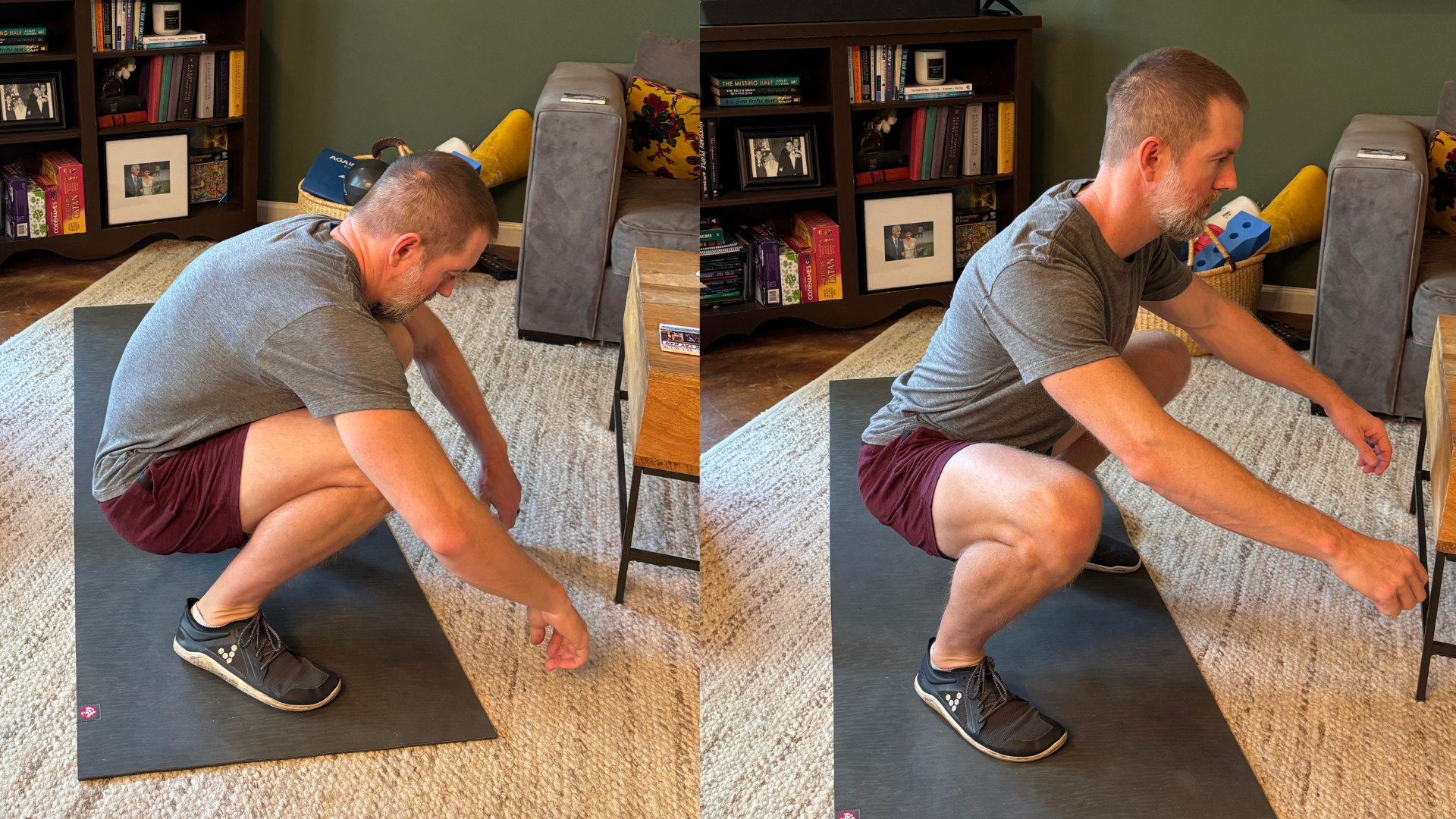Identifying and Resolving Mobility Issues
Written by Kyle Ligon - MovementLink.FIT Head Coach
When we try to get into a new position or learn a new exercise, sometimes our body just doesn’t know how to coordinate the proper muscle groups at the right times yet. How we have habitually moved and rested has created our muscle imbalances and asymmetries and as our muscles stretch into new or underused ranges, our body may respond by limiting movement in that direction because our body simply doesn’t recognize it as something we can safely do. The good news is that simple exposure to full range-of-motion, functional movement patterns during our workouts will develop our capacities. But, as part of our practice, we also perform mobility and balance exercises that help our body learn these movement and positions faster.
If we can identify our biggest limiting issues and have a plan that targets these issues, alongside developing our functional movement patterns, we can resolve nagging pains as we also build a bigger and bigger buffer from injury through general and targeted mobility work. Not only that, improved range of motion creates better positions and leverages generated better efficiencies and performance.
Stretching is Not Lengthening Muscle Fibers and Foam Rolling is Not Breaking up Scar Tissue
Stretching and joint and soft tissue exercises have been a staple in the MovementLink Method, along with many many other programs, because they have proven to be incredibly effective for us. There’s been an argument on the internet that claims the effectiveness of these tools are almost worthless that has always bugged us - Soft tissue protocols like stretching, foam rolling, and massage don’t really make any noticeable, physical changes to our tissues, and the claim concludes from this that they are therefore ineffective. This was always at odds with the bro-science reasonings of what was happening - breaking up fascia and scar tissue and lengthening muscle fibers, etc. We had seen incredible results, but in our mind the jury was still out about why it worked. Finally, we have an explanation that makes sense to us and an understanding that makes our mobility work even more effective:
Epiphany: Most improvements in range of motion and nagging pains are neurological.
Here’s how we now think of it:
Most of how and what muscle fiber groups contract and relax is subconscious. We think, “Squat down,” but our brain and the nuclei of our muscle fibers coordinate an astonishing amount to actually make it happen. Along the way there are governors on our muscle fibers that limit how far they will stretch and antagonistic muscle fibers that will contract and relax to help with stability and control. The simple way we think of it is that our body is trying to let us do what we are trying to do while protecting us from injury. When muscle fibers are moving in novel ways, to protect us, our body is going to limit what it allows us to do - this can be done by limiting the overall force we can produce or the ranges-of-motion allowed. By gaining exposure, our body learns that the positions and movements are safe and allows for more and more over time. A major part of mobility work, especially when it is somewhat uncomfortable, is to remember that our goal is to teach our body how to be comfortable with that movement, range-of-motion, or pressure put on muscle fibers. If we want to gain or resolve incorrect pain signals, we need to train our brain that moving those areas at the new ranges is OK. By taking deep breaths and controlled exhales as we relax supercharges the effectiveness of mobility work as it shows our brain that we are safe and in control. Note: I mentioned this in my Time Efficiency of Cross-Training article, but I’ll mention it here too - the same breathing pattern that we use in our cool-downs to help get us out of fight or flight mode from our workouts is the same that can be used in mobility exercises to signal safety to our brain. This is why adding mobility exercises to a cool-down can be an efficient use of time.











